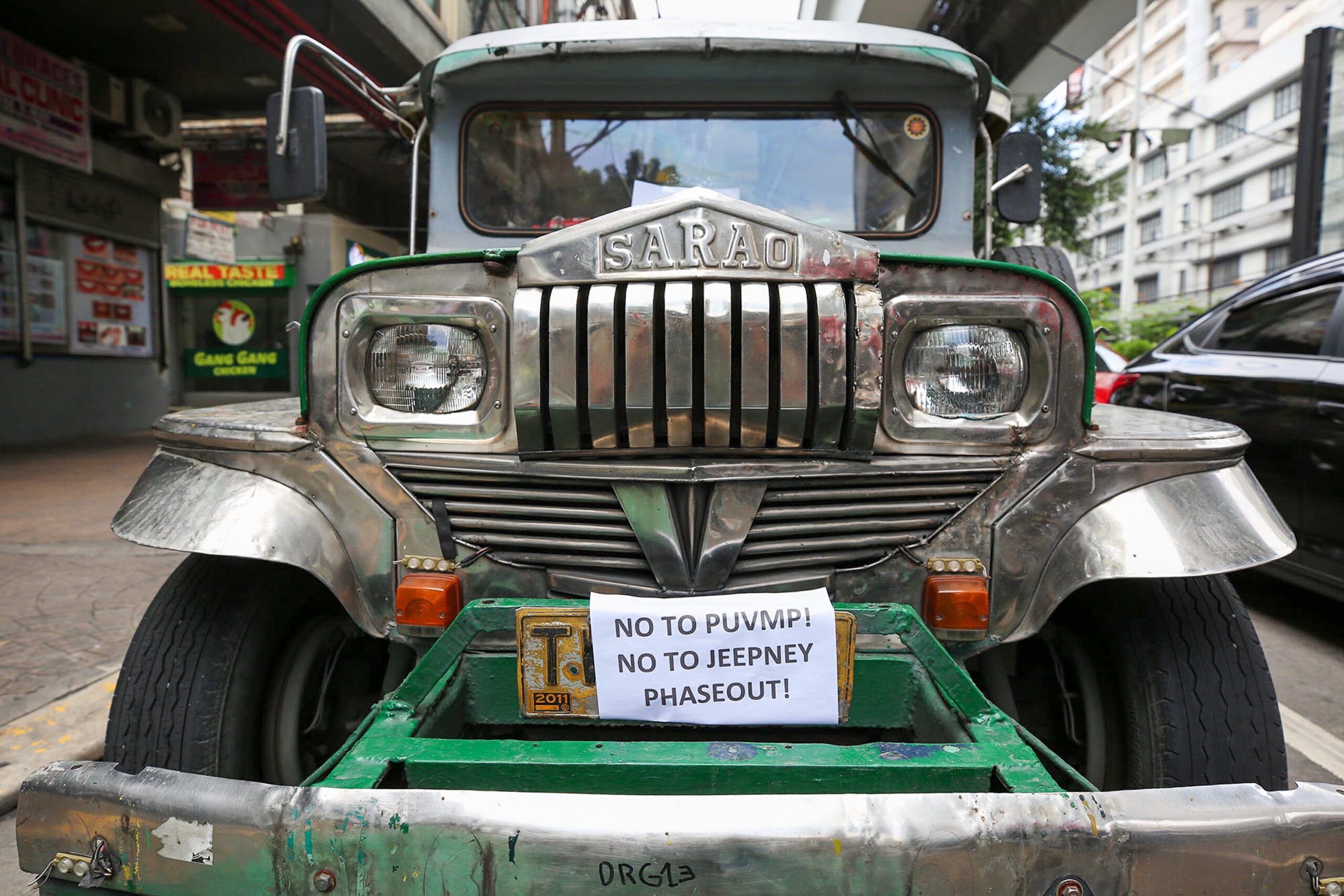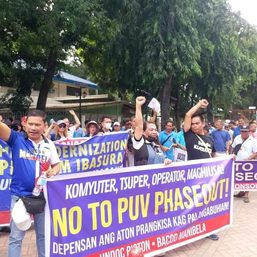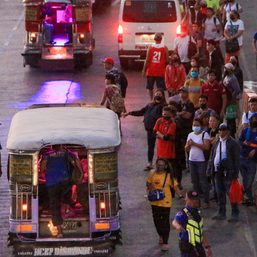SUMMARY
This is AI generated summarization, which may have errors. For context, always refer to the full article.

MANILA, Philippines – Even as pressure mounts from protesting transport groups, President Ferdinand Marcos Jr. has said that the year-end jeepney consolidation deadline will stay. But with December 31 fast approaching, just how many jeepneys have consolidated anyway?
The answer depends on how you look at the data.
If you look at consolidation figures provided by the government, the target has already been met.
Transportation officials have also said that in the coming days, they expect a rush of individual jeepney operators scrambling to file for consolidation, lest they lose their right to operate by the end of the year.
But if you look more closely at the data, it seems that industry consolidation isn’t quite as successful as the government would make it seem.
Big majority of PUVs already consolidated, government says
In his statement, Marcos claims that “70% of all operators have already committed to and consolidated under the Public Utility Vehicle Modernization Program (PUVMP).”
This 70% figure is based on data provided by the Land Transportation Franchising and Regulatory Board (LTFRB) and the Department of Transportation (DOTr). Data shared by the agencies shows that 153,787 out of 222,617 (69.08%) units have “complied” with industry consolidation. They also said 1,739 cooperatives have been formed nationwide.
But protesting groups argue that the data is misleading because it shows the total number of PUVs that have complied with consolidation – including buses, minibuses, and UV Express units. That creates a misleading picture as it pushes up the overall rate.
In short, it doesn’t focus on just jeepneys.
Unless the consolidation rates are separated and broken down per type of PUV, it’s difficult to see the true progress of consolidation among jeepneys.
The status of industry consolidation also varies greatly across regions. For instance, Metro Manila only has 13,470 out of 51,984 PUV units (25.91%) consolidated. Meanwhile, Soccsksargen boasts the highest consolidation rate at 6,121 out of 6,121 PUV units (100%) consolidated, followed by Calabarzon at 26,547 out of 29,054 (91.33%).
The data provided by the transport agencies shows the government has even exceeded expectations, with their estimated actual consolidation rate at 70% versus their 65% target.
Rappler has requested for more detailed data on industry consolidation from the LTFRB and the DOTr. We will update this story once we have received the data.
What do transport groups say?
PISTON, which has threatened to stage another transport strike mid-December, said that only 26% of jeepney units in the National Capital Region (NCR) have consolidated, along with 36% of UV Express units.
The transport group said that if the December 31 consolidation deadline pushes through, it could affect up to 60,000 drivers and 25,000 operators, although PISTON did not expound on how it settled on these figures.
Because of this, PISTON said it will continue with its strike despite President Marcos’ statement on the consolidation deadline.
Left-wing political group Bagong Alyansang Makabayan, or Bayan, also holds a similar stance. According to DOTr data obtained by Bayan, only 10,973 out of 41,835 jeepney units (26.23%) have filed for consolidation in NCR.
Nationwide, only 84,809 out of 149,448 jeepney units (56.75%) have filed for consolidation, lower than the nearly 70% rate proclaimed by Marcos.
“What Marcos may be referring to is the total aggregate consolidation of all public utility vehicles nationwide,” Bayan president Renato Reyes said in a statement on Tuesday, December 12. “DOTr is projecting a 72% nationwide consolidation under a best-case scenario.”
“Still, this does not show the real picture of how low the rate of consolidation is in NCR, where the largest number of PUJs and UVEs are found,” he added.
After consolidation, jeepney operators will be required to modernize their fleet, which is the next step in the PUVMP. This requires operators to purchase pricey modern jeepneys that not all can readily afford. – Rappler.com
Add a comment
How does this make you feel?








![[Under 3 Minutes] When will we see modern jeepneys on the road?](https://www.rappler.com/tachyon/2024/04/francisco-motors-modern-jeepney-prototype-1.jpg?resize=257%2C257&crop=590px%2C0px%2C1012px%2C1012px)
There are no comments yet. Add your comment to start the conversation.